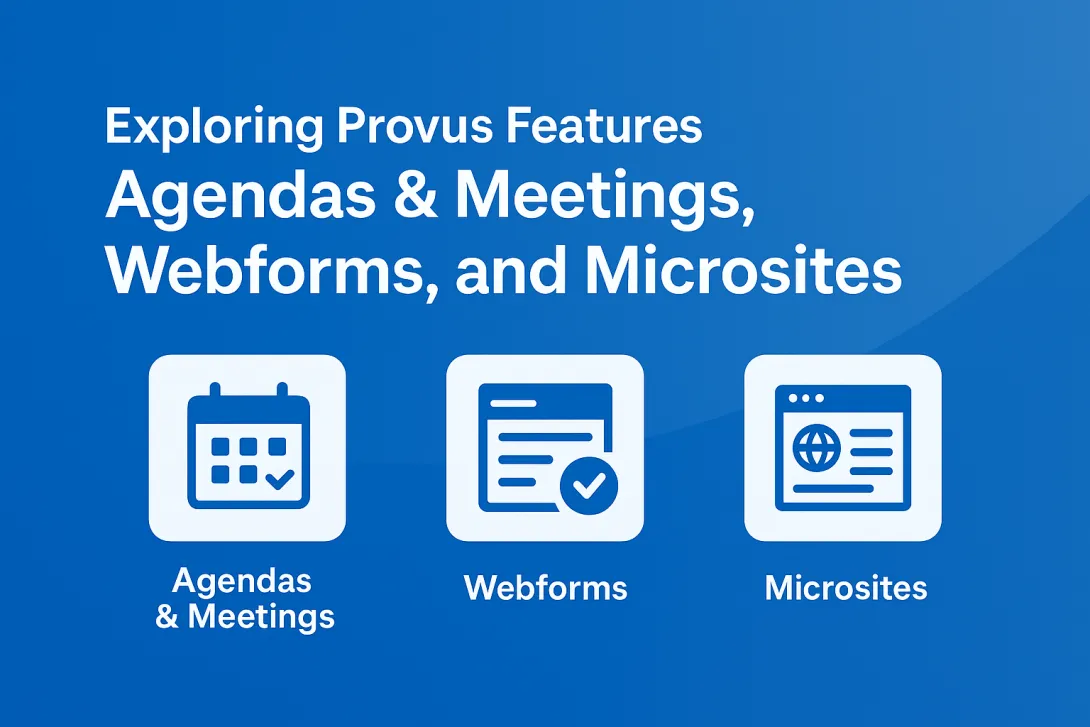Scaling Government: Open Source vs Proprietary CMS

Table of Contents
Note: This blog was first published on July 14, 2022, and has been updated to reflect new information and insights.
Takeaway: We’ve seen how government CMS preferences evolve with entity size, shifting from specialized proprietary solutions for smaller entities to enterprise-level, often open-source platforms for larger ones. This trend reflects the increasing need for scalability, flexibility, and advanced features as government organizations grow and face more complex digital demands.
Open-source solutions like Drupal, especially when coupled with government-specific distributions like Provus®Gov, offer a compelling blend of customization, cost-effectiveness, and security for government websites of all sizes.
Overall trends in open source vs. proprietary software usage
This section examines the adoption trends of open-source and proprietary CMS platforms across different government entity levels and sizes. We'll focus on identifiable platforms to provide clear, actionable insights.
While unidentified platforms do sometimes hold significant market shares (e.g., 55.6% in small States), we won't speculate about them. These could be homegrown, open-source, or proprietary solutions, and guessing won't be productive.
That said, it would be interesting to know what those CMS platforms are to understand better the type of platforms the U.S. government prefers.
Read: [Study] U.S. Government CMS Preferences and Trends →
Open source vs proprietary adoption in small entities
Let’s start with the cities.
Small cities
Proprietary platforms lead the group here, powering 67.2% of government websites. However, we do see usage of open-source platforms at 20.2%, which is a lot better than the 12.6% of unidentified CMS platforms.
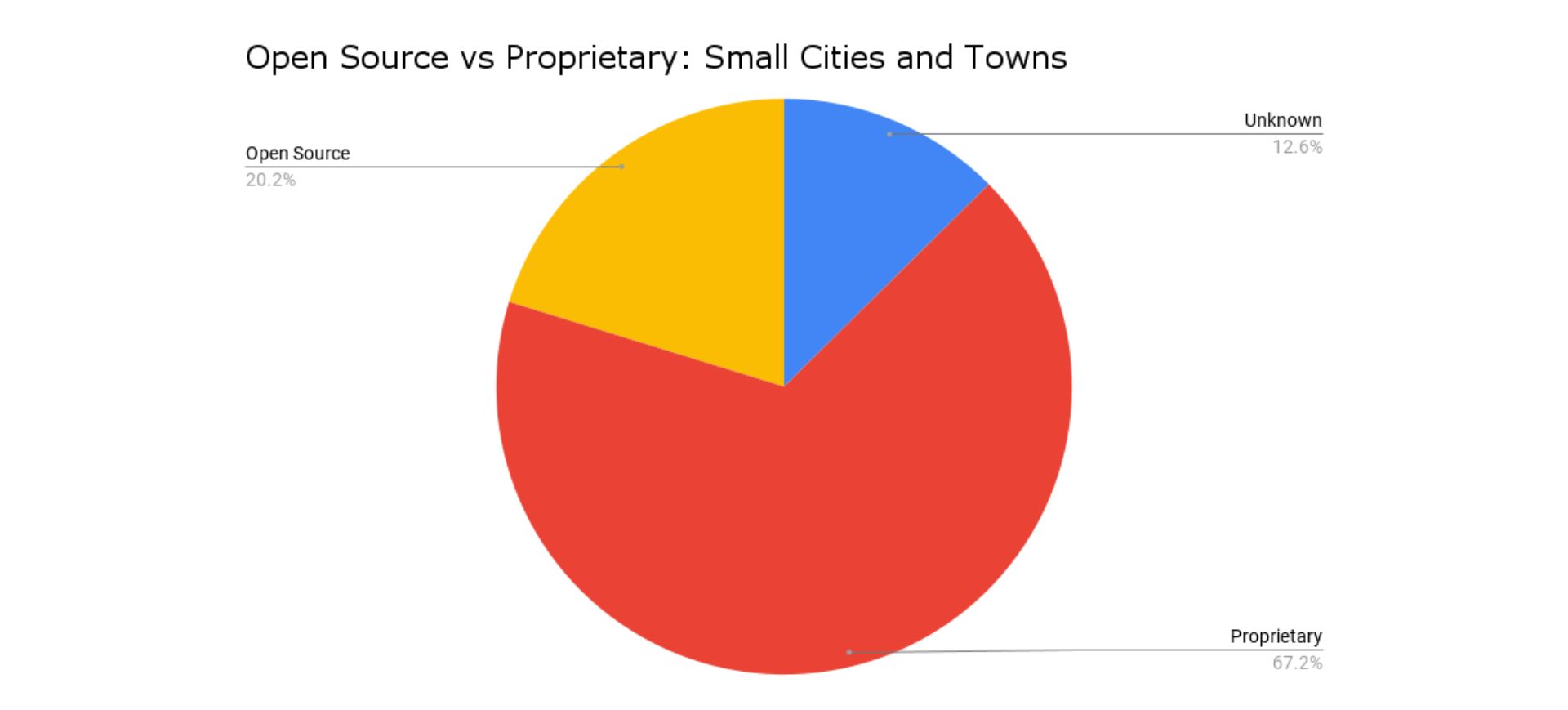
Notably, at least 5.8% of the open-share market here belongs to Drupal. As discussed our recent Drupal usage study with The Drop Times, the idea that open-source platforms like Drupal are useful only to large websites is not true.
Small counties
Proprietary platforms are still in the lead here, powering 48.1% of websites, while open-source solutions gain some traction, claiming 25.7% of the market share.
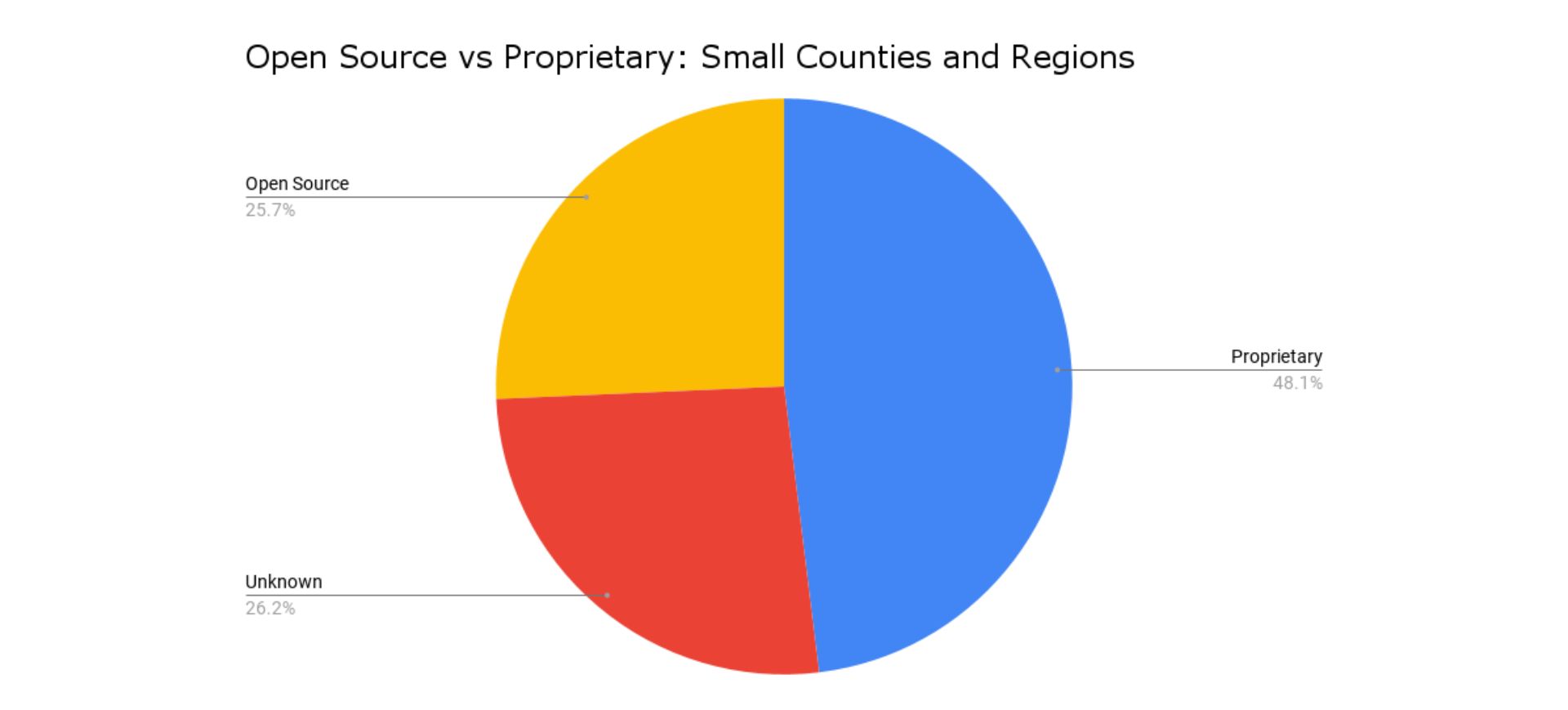
Small States
Last but not least for small entities—open-source solutions lead the identifiable solutions with a robust 38.9% share. For small entities, this is the highest market share that open-source solutions hold.
Interestingly, proprietary systems at this government level and size show minimal adoption at 5.6%. This is the lowest proprietary software adoption we see across all government levels and sizes.
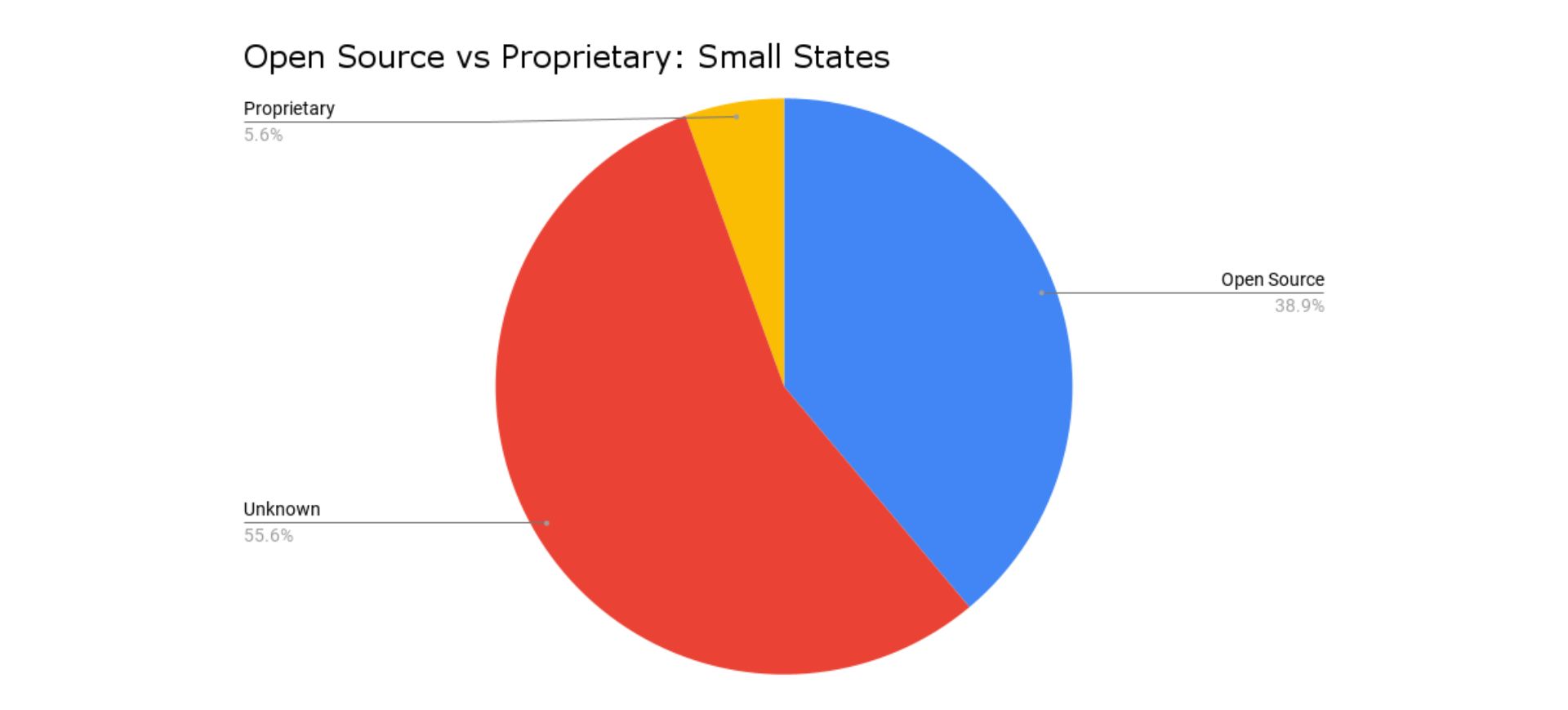
Open source vs proprietary adoption in mid-sized entities
Now, let’s move on to the mid-sized cities.
Mid-sized cities
Proprietary solutions once again dominate but with a 14.4% decrease from small cities adoption at 52.8%. We see also a slightly higher adoption of open-source solutions at 25.9%.
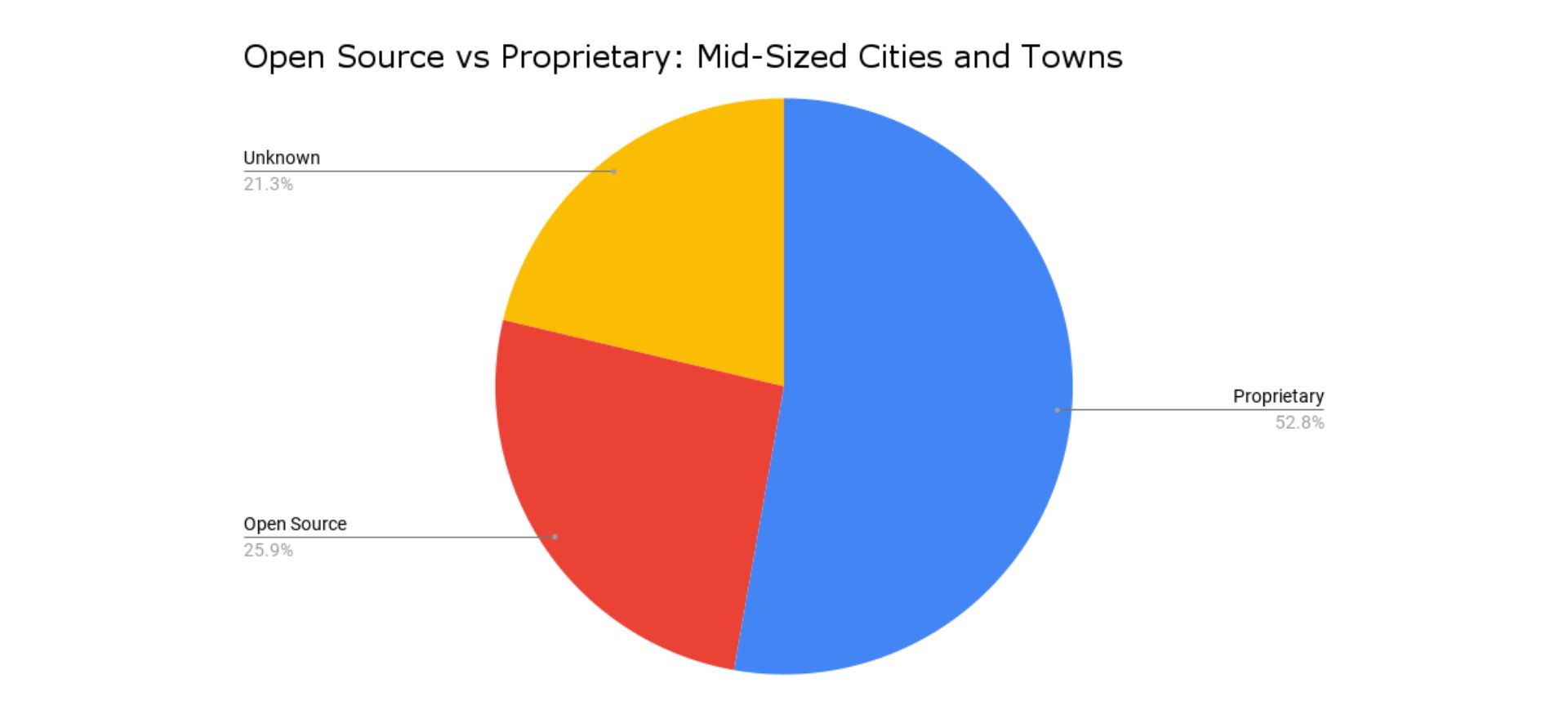
Mid-sized counties
Proprietary solutions lead at 41.2%—just a slight decrease from small counties. Open-source solutions, however, have grown here with 31.5% of the market share.
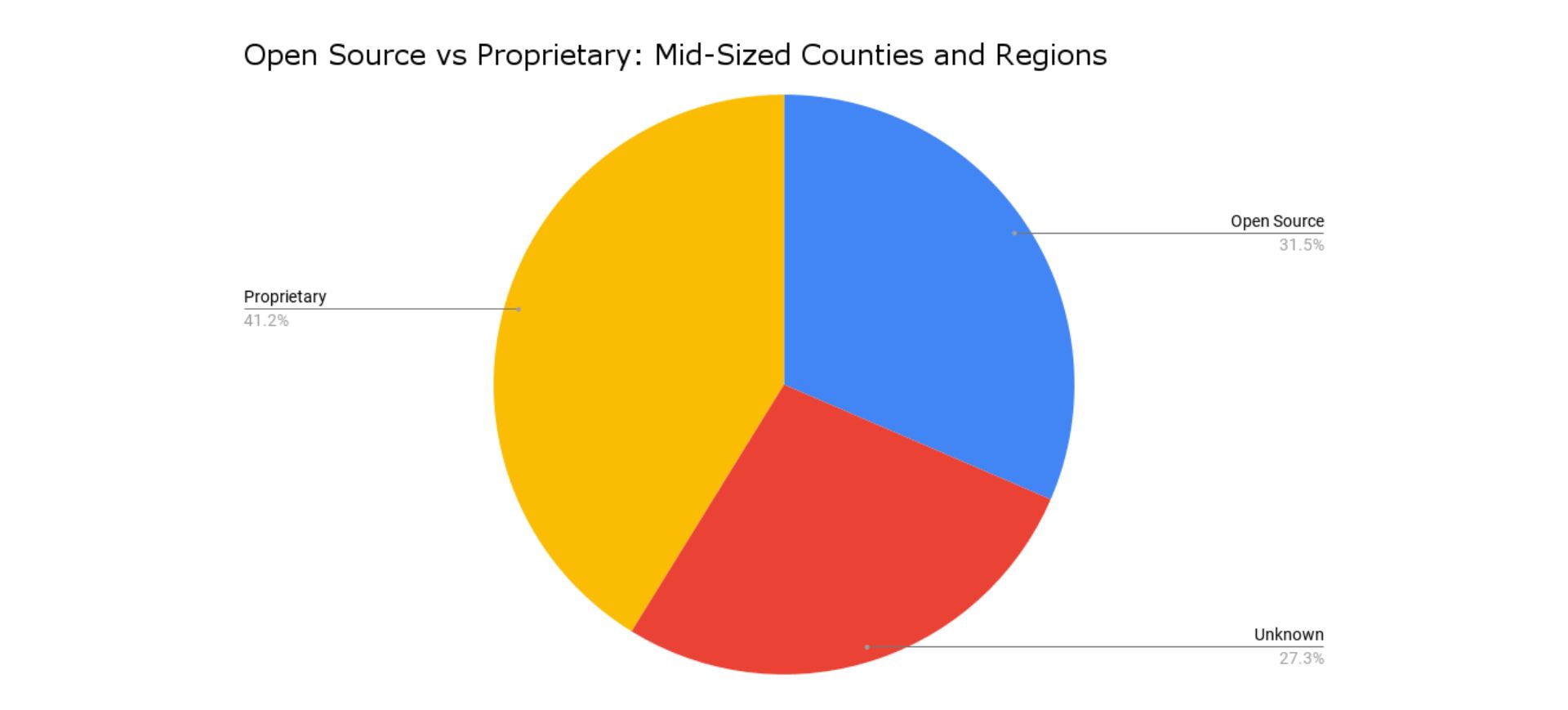
Mid-sized States
Open-source solutions are still preferred by States, accounting for 39.1% of CMS usage. However, proprietary solutions have increased significantly to 30.4%.
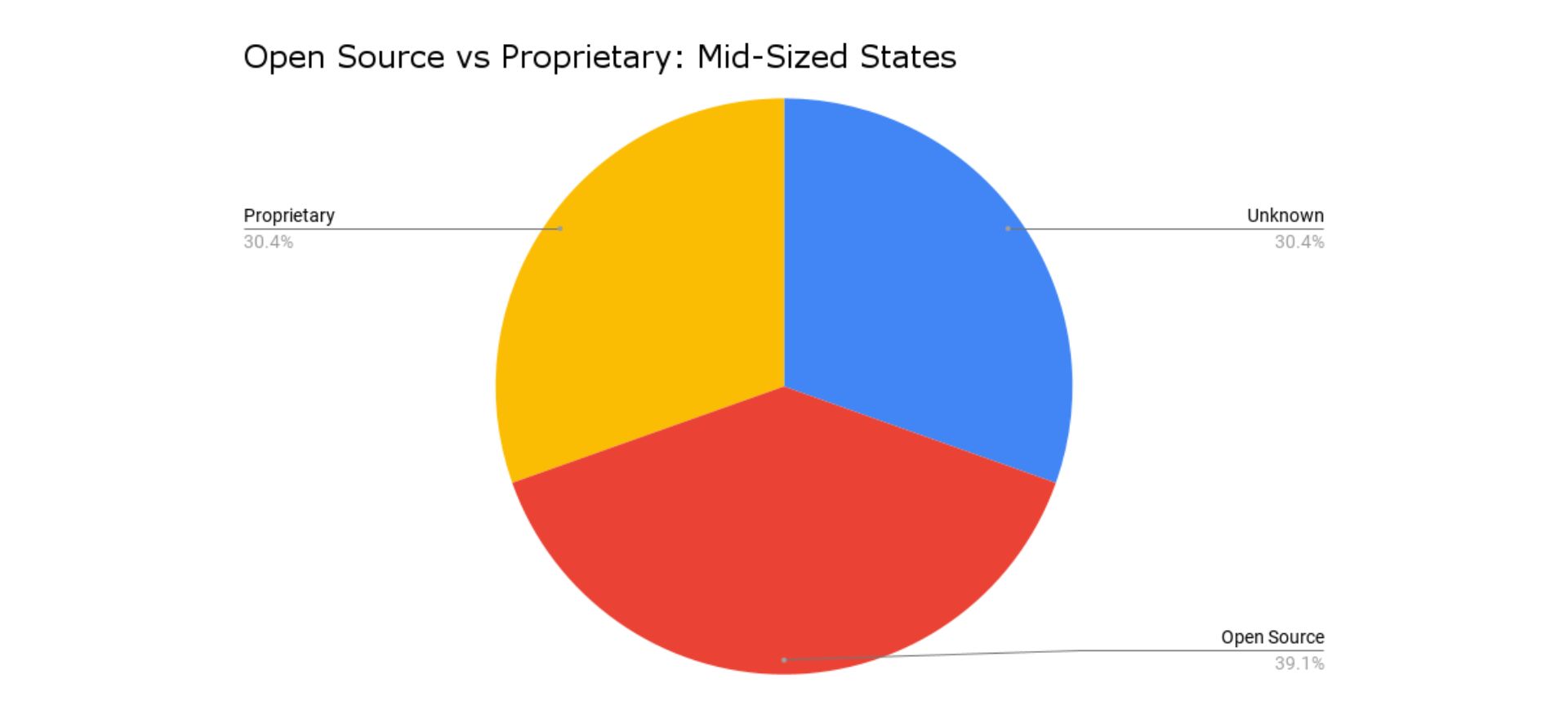
Open source vs proprietary adoption in large entities
Now, let’s discuss large cities.
Large cities
For large cities, open-source solutions dominate at 44.4%, while proprietary solutions have decreased to only 22.2%. This is a huge difference from their performance in small to mid-sized cities.
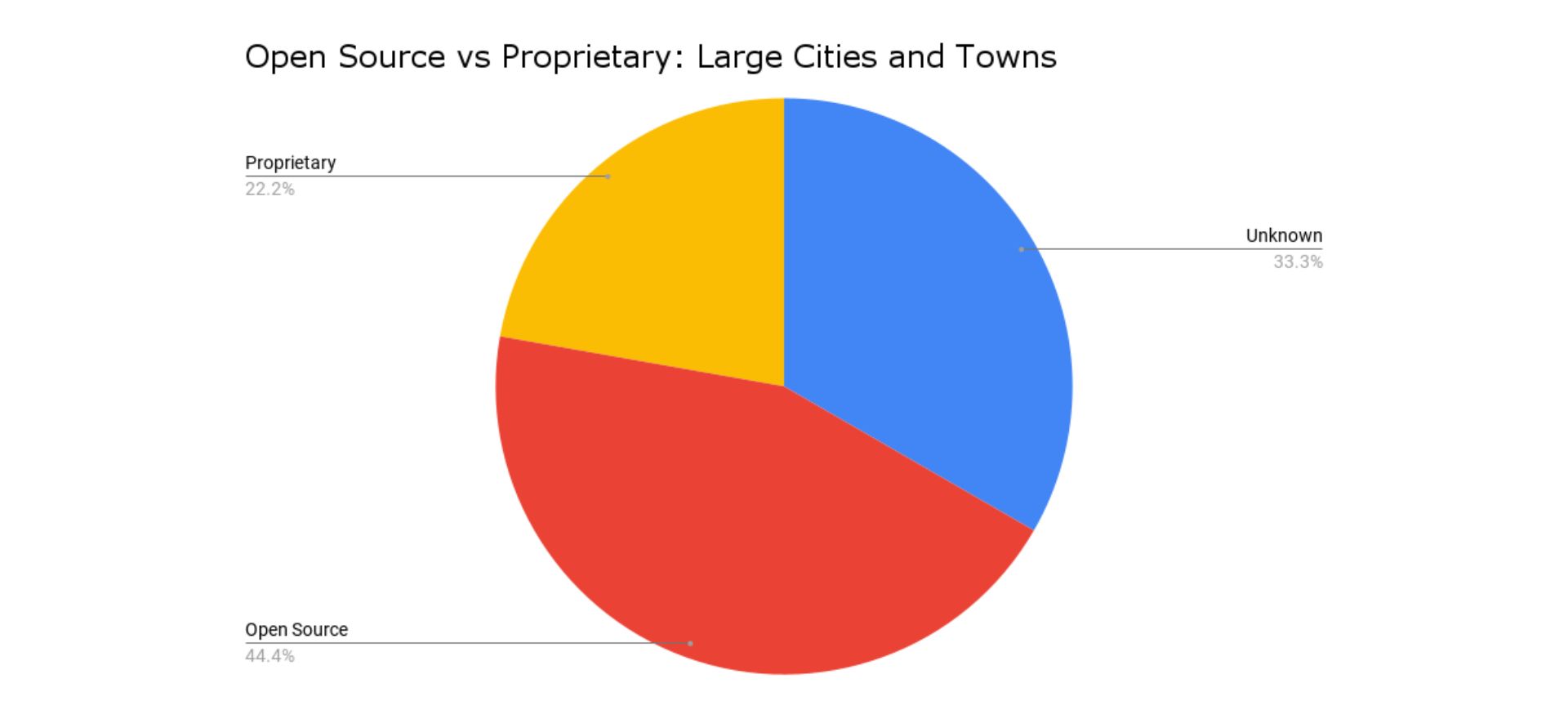
Large counties
Large counties, interestingly enough, show the same numbers. Open-source solutions dominate at 44.4% and proprietary solutions account for 22.2%. This is also a significant difference compared to their performance in small to mid-sized counties.
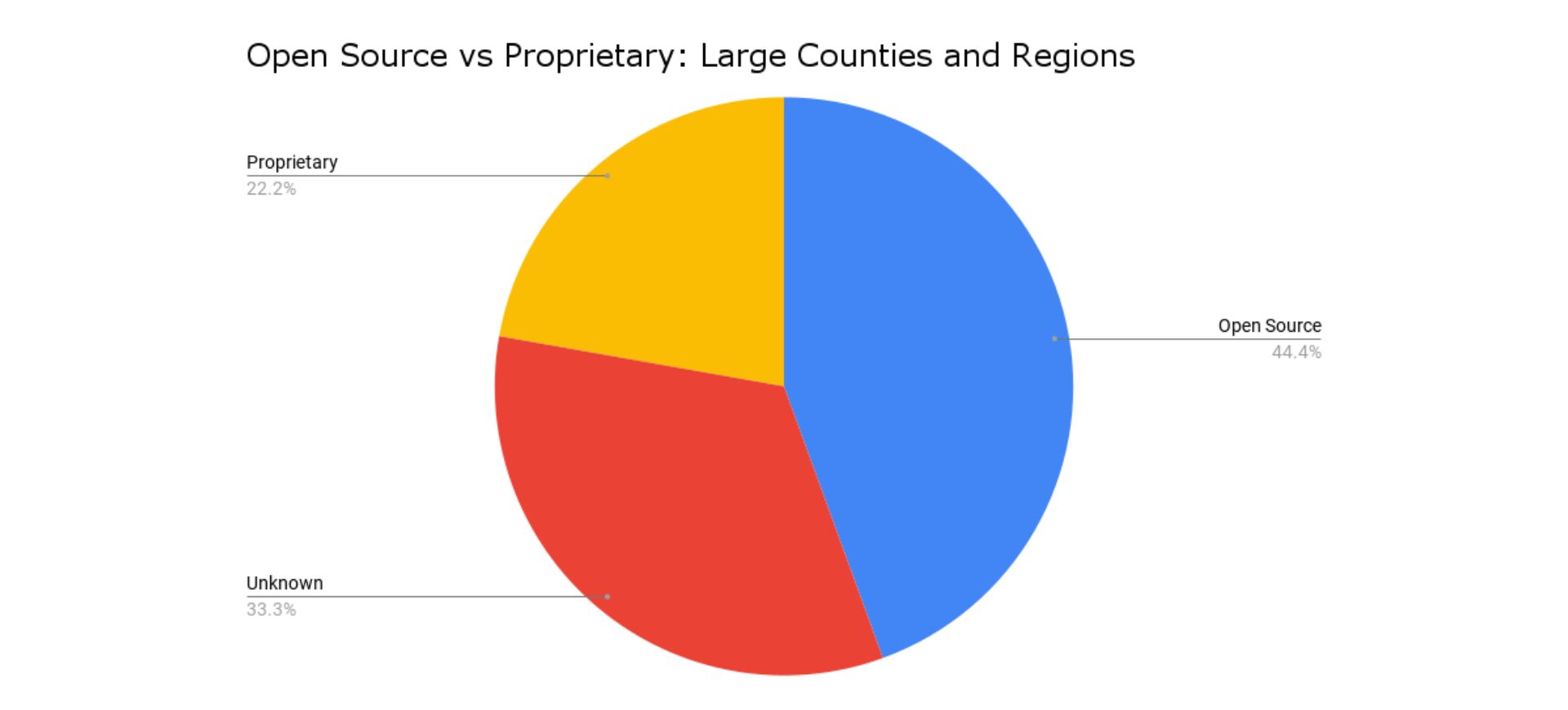
Large States
Lastly, open-source solutions account for 30% of CMS usage in large States. This is the lowest open-source adoption out of all State sizes and out of all government levels in this range. Proprietary solutions have also decreased, accounting for only 20% of the market share.
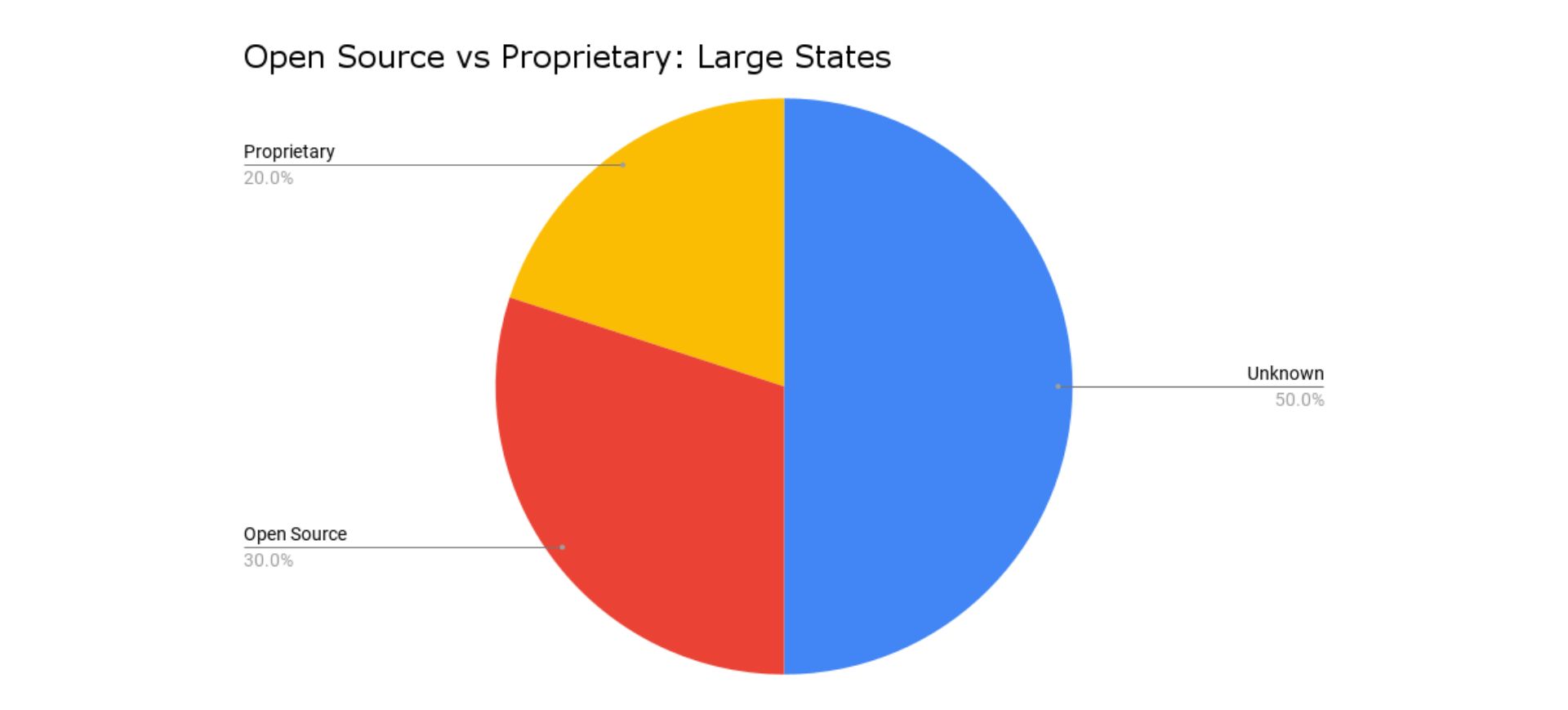
Overall analysis of open-source vs proprietary software adoption by population
Looking at the data, we see some notable trends:
- Size-based shift: There's a clear trend of increasing open-source adoption as entity size grows, particularly noticeable in cities and counties. This is consistent with our theory that population size affects CMS choices.
- State-level preference: States show a consistent preference for open-source solutions across all sizes, with small States showing the highest open-source adoption (38.9%).
- Proprietary dominance in smaller entities: Proprietary solutions dominate in small cities (67.2%) and counties (48.1%), but this dominance decreases as entity size increases.
- Convergence in large entities: Large cities and counties show identical adoption rates (44.4% open-source, 22.2% proprietary), suggesting similar needs and considerations at this scale.
- Mid-sized transition: Mid-sized entities tend to show a more balanced distribution between open-source and proprietary solutions, possibly indicating a transition phase in CMS needs.
- Anomaly in large States: Large States show lower open-source adoption (30%) compared to their smaller counterparts, bucking the trend seen in cities and counties.
These trends suggest that as government entities grow, they tend to favor the flexibility and scalability of open-source solutions. However, the unique pattern in States suggests other factors may affect CMS choices at the State level besides size, considering the 50% adoption of unidentifiable CMS platforms.
Factors driving the choice between open-source and proprietary solutions
Based on our client work, I see four key reasons why governments choose or migrate from one CMS type to another:
- Entity size and complexity of needs
- Budget constraints
- In-house technical expertise
- Need for customization, scalability, and integration
Entity size and complexity of needs
As shown in the data above, the CMS needs of government entities change as they grow in size and complexity, often leading to a change in their choices between open-source and proprietary solutions. Let’s see how this impacts their choices.
Security and Compliance
Larger entities typically face more stringent security requirements and complex compliance needs due to the nature of their website. While proprietary software vendors promote robust security features, open-source platforms like Drupal have proven their ability to meet high-security standards. The choice often depends on the entity's capacity to manage security in-house (or to find a good vendor that takes security seriously).
Read: Adobe Experience Manager vs Drupal for Government →
Citizen engagement and data ownership
As entities grow, so does the need for more sophisticated citizen engagement tools. Open-source solutions offer greater flexibility for customization, allowing entities to build their engagement tools to be however they want them. However, proprietary solutions often provide ready-made engagement features.
Data ownership becomes increasingly critical as well for larger entities. Open source solutions generally offer more control over data, which can be attractive for entities concerned about vendor lock-in or data sovereignty.
Disaster recovery and backup
Larger entities require more robust disaster recovery and backup capabilities. Proprietary solutions often include these features as part of their package, which can be appealing to entities with limited IT resources. However, open-source platforms can be configured to provide equally robust solutions, often at a lower cost.
For example, we work exclusively with open-source platforms Drupal and WordPress. Our team always follows stringent backup processes to ensure the site can be reverted or recovered if ever something goes wrong.
In practice, we see these play out in our data:
- Small cities heavily favor proprietary solutions (67.2%), likely due to out-of-the-box features and perceived ease of use.
- As entity size increases, open-source adoption grows. Large cities and counties both show 44.4% open-source adoption, suggesting that larger entities value the flexibility and customization options of open-source platforms.
Budget constraints
Let’s look at how budgets influence short-term implementations and long-term sustainability.
Vendor lock-in and long-term costs
While proprietary solutions often have higher upfront licensing costs, open-source platforms are free to use. However, the true cost comparison is more complex.
Proprietary solutions generally have higher upfront and ongoing costs due to licensing fees. Subscription costs and user seats can quickly get expensive, especially if you have multiple users needing access to the site (I’ve seen users range from 50 to 1,200—now imagine paying hundreds of dollars for each one).
Aside from that, long-term expenses can escalate with renewals and vendor lock-in. Simply put, if the vendor decides to increase their fees, you don’t have a choice.
On the other hand, open-source platforms are free to use. Long-term savings are significant, though costs will vary for hosting, support, and customization.
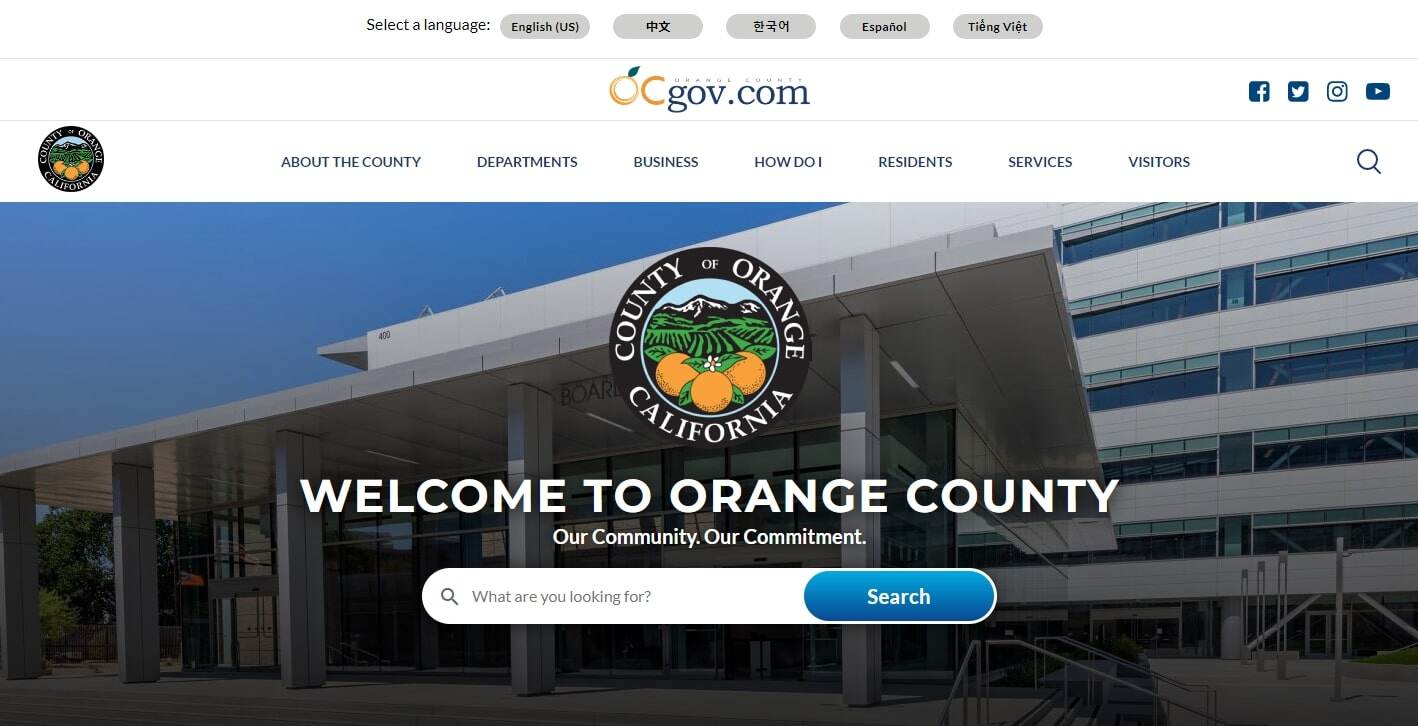
Our data shows smaller entities, possibly with tighter budgets, tend to favor proprietary solutions. I find this curious—one would think the lower costs associated with open-source solutions would be more attractive.
The data suggests smaller government entities may prioritize immediate operational needs over long-term flexibility with out-of-the-box government solutions, but I see this as a symptom of a bigger issue with how open-source solutions are perceived.
Security and compliance on a budget
Proprietary solutions often include built-in security features. The ongoing costs for updates and support will depend on your vendor’s package, so you’ll have to ensure they are robust. Remember: you’re getting your CMS and security from the same place. You can’t just up and leave! Far fewer eyes are on proprietary projects, and resources are not necessarily available to fix vulnerabilities as they are detected.
Most or all proprietary solutions are going to have very few developers with those skill sets. So in the future it’s going to be harder to find a developer to make adjustments or fixes. Likely making the ones you do find very expensive as well.
Larger open source CMS solutions typically have a very large community of developers, and contributors.This combined with their advisory or security panels often times makes the open source solutions more secure than the proprietary ones.
—Aaron Armstrong, Drupal Developer at Promet Source
For open-source solutions, robust security capabilities are available at no additional cost since community-driven updates ensure timely security patches without extra fees. With Drupal, there’s even a handbook for writing secure code.
It would still be advisable to look for a vendor to ensure security is extra tight (if you don’t have internal capabilities!) but no vendor lock-in means you can look for one that fits your budget.
The trend towards open source in larger entities (44.4% for large cities and counties) suggests recognition of the cost-effectiveness of open-source security solutions.
Community vs vendor support
Next, let’s go to support.
Organizations using open-source platforms benefit from free community support and documentation. Optional paid support is available from various vendors—and what we love about this is that you can always expect us to bring our A-game because we know we have to earn your business every single day.
Proprietary CMS typically includes vendor support. The level of support depends on your package, so you must check if you have access to their support team at your package level.
When it comes to choosing between open-source & proprietary CMS platforms, it really depends on need & priorities. From my experience working with different organizations, a decision is usually based on factors like flexibility, security, or sustainability in the long run.
Open-source options like WordPress/Drupal provide many customization possibilities, strong security features for handling sensitive information, and often end up being more cost-effective in the long term due to community support.
While proprietary CMS platforms might seem easier to use at first, startup or temporary projects can use them. They can hinder scalability and end up costing more in the long term, especially in complex or changing environments.
—Ila Bandhiya, Senior Digital Marketer at Middleware.io
The shift towards open source as entity size increases likely reflects a realization of its cost-effectiveness when leveraged properly.
In-house technical expertise
The level of in-house technical expertise significantly influences a government entity's choice between open-source and proprietary CMS solutions. This factor becomes increasingly important as entity size grows.
Internal security management
Proprietary CMS platforms are often marketed as "secure out-of-the-box," appealing to entities with limited technical resources. On the other hand, open-source CMS platforms offer robust security but require more hands-on management from internal teams. Entities without strong technical teams can look for a vendor for support.
I generally prefer open source most of the time. Proprietary software isn't inherently safer; it just means the code is closed off from public view. Open source, on the other hand, allows anyone to review and improve the code, making it easier to find and fix bugs. As the adage goes: "Given enough eyeballs, all bugs are shallow."
Many large organizations rely on open-source solutions. Both open-source and proprietary software have their share of strong and weak projects. Moreover, open-source CMS options are cheaper and more customizable, both of which are important to me.
—Monty Mathur, SEO Consultant at Monty Mathur SEO
Our data shows smaller entities lean towards proprietary solutions (67.2% for small cities), possibly due to limited in-house expertise. The shift towards open-source in larger entities (44.4% for large cities and counties) suggests either greater confidence in internal technical capabilities or a budget for external vendors.
Community vs vendor support
Proprietary CMS platforms offer dedicated vendor support, attracting government entities with limited IT staff. Since they handle the CMS and support, you can be sure they’re experts in their product.
For open-source CMS, entities can choose to forego vendors to rely on community support and documentation. Those with skilled technical teams can maximize these resources, often leading to cost savings and even tailored solutions.
However, again—vendor options are available for governments with limited teams. For example, our clients are a mix of limited and full support. Some clients choose to give us complex tasks while their internal teams work on what they can to limit costs. Others ticket us all the issues so they don’t have to think about them. It will depend on your needs and capacity.
I tend to lean towards open source rather than proprietary, when possible. The main positives for me are that a lot of open source software is transferable between systems and there's often a great sense of community when open-source solutions are well-supported.
I've received some really great feedback and "customer support" when using open-source software whereas I often find support via official channels with proprietary software can be much slower.
—Jack Chambers-Ward, Marketing & Partnerships Manager at Candour
Content management considerations
Proprietary CMS platforms tend to shine because their out-of-the-box solutions often include an easy-to-use platform. For example, Revize—a popular government-specialized platform—says if you can edit a Word document then you can perform content editing tasks using their platform.
Open-source CMS platforms can vary. Some require minimal initial setup and can be quickly customized for optimal ease of use, which is why WordPress is popular. Others can be more technical.
However—it’s a big mistake to assume Drupal can only be useful if you have a technical team. For example, we built Provus®Gov—a Drupal distribution or distro—for entities that want a government-specialized, out-of-the-box solution while still enjoying the power of Drupal.
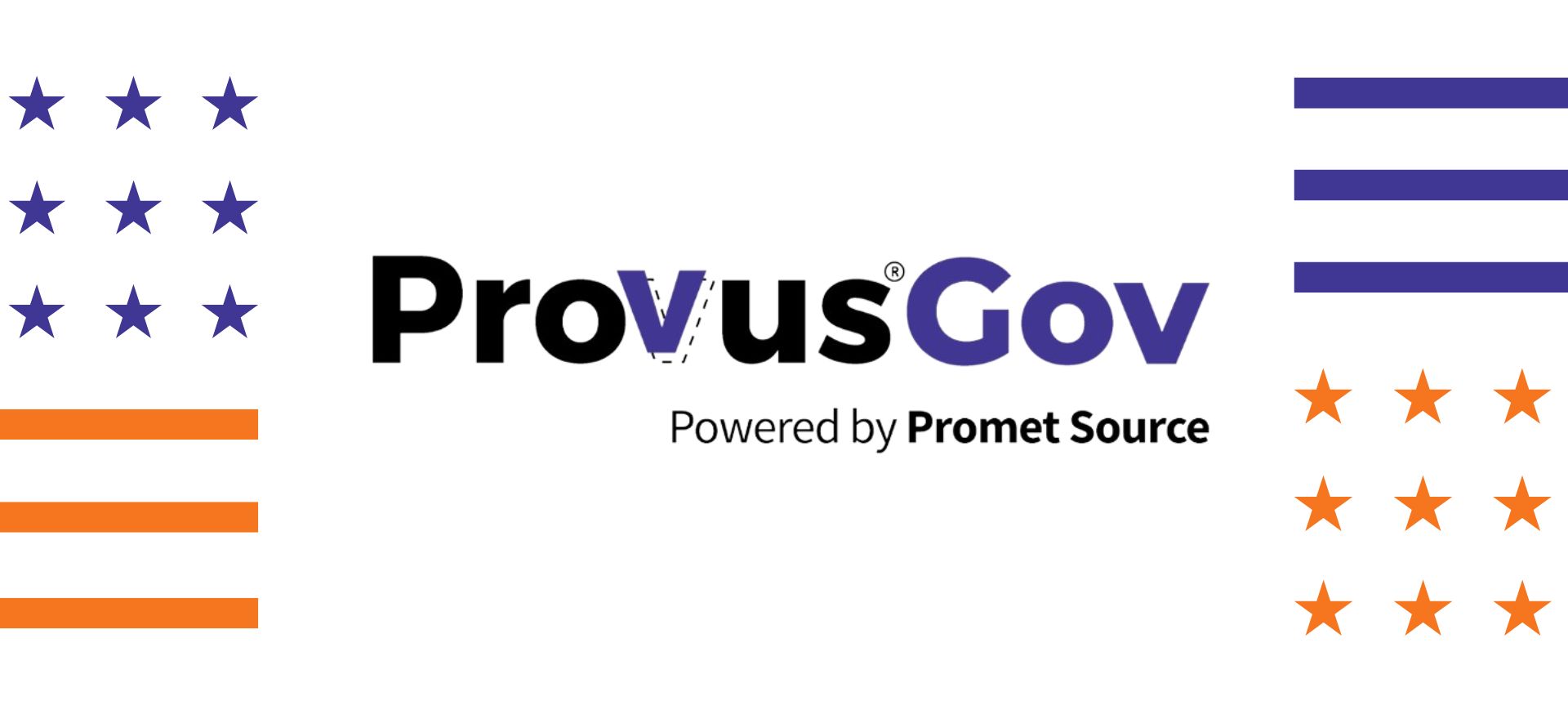
Need for customization, scalability, and integration
From what we’ve seen with our government clients, their needs for customization, scalability, and integration become increasingly intertwined as their websites grow and become more complex. These factors significantly influence the choice between open-source and proprietary CMS solutions.
Customization capabilities
Proprietary CMS platforms can be customizable, but you’ll have to watch out for extra fees. Features that may have been available as plugins and modules in open-source platforms will have to be paid for as extra.
Not to mention, since you’re not the only one subscribed to the CMS, product teams tend to wait for a demand (which is never clear in our experience just how much of a demand) for a certain feature before they build it.
Open-source is the opposite of this—we practically have unlimited customization potential. Let’s take Drupal again as an example—is there a feature our client needs? Let’s check the 50,000 available modules. Let’s check with the community if they have a solution. And if nothing comes up, our developers build what the clients need.
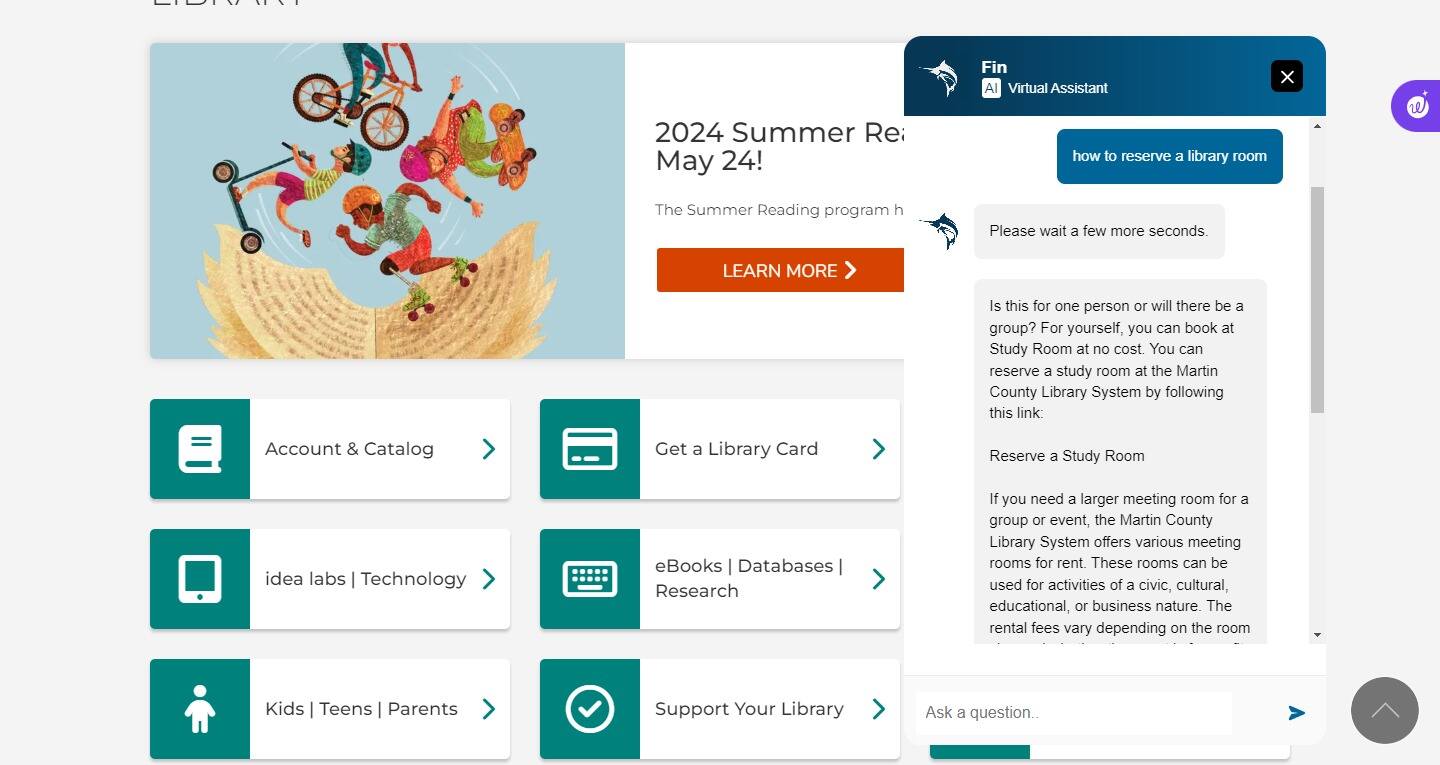
We do understand that this can get overwhelming, especially for government entities looking to manage the CMS on their own without having to worry about customizations and configurations. That is why we built Provus®Gov.
Our data shows smaller entities prefer proprietary solutions, likely valuing out-of-the-box functionality. Although larger entities shift towards open-source, suggesting a growing need for tailored solutions, open-source should not be discounted.
Long-term scalability
This is what open-source solutions, especially enterprise-level ones like Drupal, are famous for. They offer flexibility to scale without constraints, allowing entities to grow their digital presence alongside their operational needs.
On the other hand, the scalability of proprietary solutions often depends on vendor-provided upgrades and can be constrained by licensing tiers.
Integration with existing systems
Depending on the proprietary CMS you have, they may offer pre-built integrations for government systems. I believe this is one of the main reasons why specialized systems dominate in smaller entities.
But again, open-source CMS platforms are flexible. If the recommended modules for government don’t offer the integration you need, we can check other existing modules or build a custom API.
Need help evaluating your CMS needs? Contact us
Advantages and disadvantages of open-source vs proprietary CMS
Based on the factors above, we can see that both platform types have their advantages and disadvantages. Here’s a summary:
Open-source CMS advantages:
- Flexibility and customization: Offers unlimited potential for tailoring to specific needs.
- Cost-effectiveness: Free to use with potential for significant long-term savings.
- No vendor lock-in: Freedom to switch service providers or bring support in-house.
- Community support: Large developer communities provide ongoing improvements and support.
- Scalability: Grows with your organization without artificial constraints.
- Data control: Greater control over data and sovereignty.
- Integration capabilities: Flexibility to create custom integrations with various government systems.
- Transparent security: Community-driven updates ensure timely security patches.
- Government-specific solutions: Distros like Provus®Gov offer out-of-the-box functionality while retaining open-source benefits.
Open-source CMS disadvantages:
- Technical expertise: May require more in-house technical skills or vendor support.
- Support structure: Lacks guaranteed vendor support unless contracted separately.
Proprietary CMS advantages:
- Out-of-the-box functionality: Often can be plug-and-play, and there’s no shortage of government-specialized ones too.
- Ease of use: Generally perceived as user-friendly for non-technical staff.
- Dedicated support: Vendor support is typically included in the package.
- Pre-configured security: Often marketed as "secure out-of-the-box."
- Government-specific integrations: Specialized versions may offer pre-built integrations for common government systems.
Proprietary CMS disadvantages:
- Higher costs: Substantial upfront and ongoing licensing fees.
- Limited customization: Modifications are often restricted or require additional fees.
- Vendor lock-in: Switching to another platform can be costly and risky due to its proprietary nature and typically you do not own the code.
- Constrained scalability: Growth is often limited by licensing tiers.
- Less data control: Potential concerns over data ownership and sovereignty.
- Dependency on the vendor: Upgrades and new features are controlled by the vendor.
- Long-term expense: Costs can escalate over time due to renewals and necessary upgrades.
It's important to note that solutions like Provus®Gov bridge the gap between open-source flexibility and out-of-the-box convenience, offering you the best of both worlds. This type of solution addresses many of the traditional cons associated with open-source CMS, making it a great option for government entities who want to experience open-source without the technical hassle.
Case studies of successful open-source implementations
Moving from a proprietary solution to an open-source platform can be scary, especially since you’re fully dependent on your vendor. I want to show you that it doesn’t have to be the case.
The adoption of open-source CMS solutions by these two counties has led to significant improvements in service delivery, cost savings, and citizen engagement. We worked with them from the start to the end of the migration, and they decided to continue with us for support!
Orange County, California
Orange County, California, the 6th largest county in the U.S., migrated to Drupal, resulting in remarkable improvements. The transition led to estimated annual cost savings exceeding $100,000, showcased the financial benefits of open-source adoption, and empowered over 100 content editors with no-code editing capabilities.
Additionally, the move to Acquia Cloud hosting enhanced the county's website scalability and reliability.
Martin County, Florida
Martin County, Florida, another success story, sought a solution for robust search capabilities and convenient access to governmental documents. Their migration to Drupal yielded impressive results:
- Improved citizen engagement through a task-oriented approach
- Enhanced disaster recovery and backup capabilities
- Cohesive brand identity across multiple county websites
- Ongoing ADA web accessibility compliance
Read: CMS Migration for State and Local Government →
These case studies illustrate how open-source CMS solutions, particularly Drupal, can address common challenges faced by government entities of various sizes. From Orange County's 3 million residents to Martin County's 163,000+, these platforms prove adaptable and scalable.
They offer the flexibility to manage multiple microsites and integrate various county services, showcasing the versatility of open-source platforms. These successful implementations demonstrate how open-source CMS solutions can transform government websites, offering enhanced functionality, cost-effectiveness, and improved citizen engagement.
Our website migration services have facilitated smooth transitions from proprietary to open-source systems, enabling government entities to leverage these benefits effectively.
Addressing common misconceptions about open-source CMS
When it comes to open-source CMS solutions for government websites, our team sees several misconceptions continue to persist. Let's address these and explain how our services can ease transition concerns.
Misconception 1: Open-source CMS can't meet specific government needs
Many believe that open-source solutions lack the specialized features required for government websites. However, I’ve explained that platforms like Drupal offer extensive customization options. Our Provus®Gov distribution, built on Drupal, is specifically designed for government needs. It provides out-of-the-box functionality while retaining the benefits of open source so you can have the best of both worlds.
Misconception 2: Open-source implementation is time-consuming
There's a common misconception that open-source solutions must always be built from scratch, leading to long implementation times. In reality, open-source CMS platforms like Drupal come with robust core features and a vast library of core modules. Plus, using a distribution like Provus®Gov—the government-specific version of our project Provus®—makes website-building and implementation faster.
Simply put, if Provus® helps you hit the ground running, Provus®Gov helps you sprint.
Misconception 3: Open-source lacks proper support
Some worry that open-source platforms lack the support structure of proprietary solutions. However, open-source platforms like Drupal benefit from extensive community support and documentation. Plus, professional support is available through partners like us. We provide ongoing maintenance, security updates, and technical support, ensuring your website remains robust and up-to-date.
Easing transition concerns
We understand that transitioning to a new CMS can be daunting. Downtime for your site is a huge no-go! Our service is designed to address these concerns:
- Seamless migration: We've developed specialized tools and processes to ensure smooth content migration from various platforms to Drupal.
- Training and empowerment: We provide comprehensive training to your team so they can manage and update content efficiently. We will not migrate your site to Drupal then just leave you alone!
- Ongoing support: Our relationship doesn't end at launch. We offer continued support and maintenance, ensuring your website evolves with your needs and stays secure.
- Cost-effective solutions: As demonstrated by Orange County's annual savings of $100,000, our open-source solutions can significantly reduce long-term costs.
Need help evaluating your CMS needs?
As we've discussed, the choice between open-source and proprietary CMS solutions is crucial for government entities of all sizes. The trends we've observed show a clear shift towards open-source platforms, particularly among larger entities, due to factors like their flexibility, scalability, and cost-effectiveness.
However, we understand that every government organization has unique needs and challenges. Whether you're a small city looking for an out-of-the-box solution or a large county requiring a highly customized platform, the decision-making process can be complicated.
That's where our expertise comes in. With years of experience in government website migrations and our specialized solutions like Provus®Gov, we're uniquely positioned to help you navigate this important decision.
Don't let misconceptions or concerns about the transition process hold you back from exploring the best CMS option for your needs. Our team is ready to provide a personalized assessment of your situation, answer your questions, and guide you toward a solution that will serve your community effectively for years to come.
Contact us today for a free technical migration audit and learn exactly what and how to make your move to a flexible, secure, compliant and easy-to-use CMS.
Get our newsletter
Get weekly Drupal and AI technology advancement news, pro tips, ideas, insights, and more.

